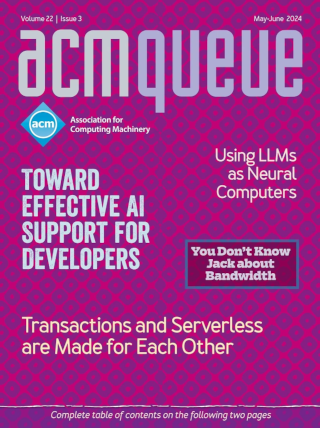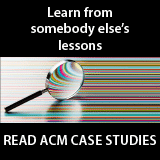
Taking Flight with Copilot:
Early insights and opportunities of AI-powered pair-programming tools
Over the next five years, AI-powered tools likely will be helping developers in many diverse tasks. For example, such models may be used to improve code review, directing reviewers to parts of a change where review is most needed or even directly providing feedback on changes. Models such as Codex may suggest fixes for defects in code, build failures, or failing tests. These models are able to write tests automatically, helping to improve code quality and downstream reliability of distributed systems. This study of Copilot shows that developers spend more time reviewing code than actually writing code. As AI-powered tools are integrated into more software development tasks, developer roles will shift so that more time is spent assessing suggestions related to the task than doing the task itself.
To PiM or Not to PiM:
The case for in-memory inferencing of quantized CNNs at the edge
As artificial intelligence becomes a pervasive tool for the billions of IoT (Internet of things) devices at the edge, the data movement bottleneck imposes severe limitations on the performance and autonomy of these systems. PiM (processing-in-memory) is emerging as a way of mitigating the data movement bottleneck while satisfying the stringent performance, energy efficiency, and accuracy requirements of edge imaging applications that rely on CNNs (convolutional neural networks).
The Fun in Fuzzing:
The debugging technique comes into its own.
Stefan Nagy, an assistant professor in the Kahlert School of Computing at the University of Utah, takes us on a tour of recent research in software fuzzing, or the systematic testing of programs via the generation of novel or unexpected inputs. The first paper he discusses extends the state of the art in coverage-guided fuzzing with the semantic notion of "likely invariants," inferred via techniques from property-based testing. The second explores encoding domain-specific knowledge about certain bug classes into test-case generation. His last selection takes us through the looking glass, randomly generating entire C programs and using differential analysis to compare traces of optimized and unoptimized executions, in order to find bugs in the compilers themselves.
Three-part Harmony for Program Managers Who Just Don't Get It, Yet:
Open-source software, open standards, and agile software development
This article examines three tools in the system acquisitions toolbox that can work to expedite development and procurement while mitigating programmatic risk: OSS, open standards, and the Agile/Scrum software development processes are all powerful additions to the DoD acquisition program management toolbox.
All Sliders to the Right:
Hardware Overkill
There are many reasons why this year's model isn't any better than last year's, and many reasons why performance fails to scale, some of which KV has covered in these pages. It is true that the days of upgrading every year and getting a free performance boost are long gone, as we're not really getting single cores that are faster than about 4GHz. One thing that many software developers fail to understand is the hardware on which their software runs at a sufficiently deep level.





